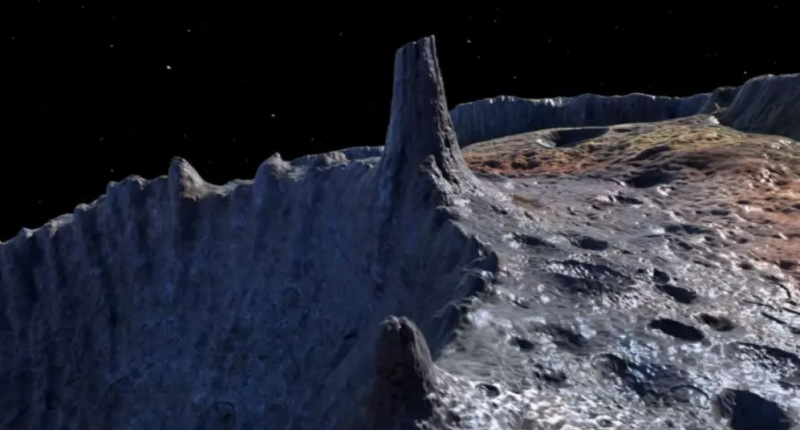NASA and Elon Musk’s SpaceX are readying for launch to a giant asteroid that could be key to uncovering the truth about the beginning of our solar system.
The asteroid, known as Psyche 16, also contains enough metal to make everyone on Earth a billionaire.
SpaceX’s Falcon 9 rocket is currently scheduled to take off from the Nasa Kennedy Space Centre in Florida at around 10:16am EDT (3:16pm BST).
Aboard the rocket is Nasa’s Psyche satellite, whose destiny will be to travel to the cosmic rock located on the far edge of the large asteroid belt between Mars and Jupiter and never return.
The spacecraft will investigate material from the asteroid that’s been around since the early days of our solar system.
The asteroid is about 2.2billion miles away, and features enough metal to total a whopping $10,000 quadrillion should it ever be turned into a commodity.
READ MORE ON NASA
“We have no technology for bringing Psyche back to Earth,” said Lindy Elkins-Tanton, principal investigator of the Psyche mission.
“There isn’t any way to do that. And then if we did, it would probably be a really bad day on Earth, because we also have no technology for putting it into a stable orbit.”
The spacecraft won’t reach its destination until August 2029, following a gravity-assisted slingshot manoeuvre around Mars in 2026.
Once it’s in place, scientists will be able to study the metal asteroid to determine how the rocky planets of our solar system, such as Mercury, Venus, Mars and Earth, formed.
Most read in Tech
It won’t ever land on the asteroid, or as Tanton explained, ever see Earth again.
It will instead make orbits around the asteroid at an eyewatering 430miles per hour.
Nasa’s cutting edge ‘hall-effect thrusters’ – which have so far only been used to get to moon – to keep spacecraft in place and let the scientific instruments on board do their job.
It will keep this up 448 days in total, across five mission phases: A, B1, B2, C and D.
Each phase will use different instruments to inspect the asteroid at different distances, getting gradually closer to the asteroid through each phase.
The asteroid is thought to be exposed planetesimal core – what forms the inside of rocky planets like Earth.
Psyche 16, discovered in 1852, is understood to have had the makings to become a planet.
But it never quite got there because it collided with larger bodies in the chaotic early days of our solar system.
Of particular interest to scientists is a 173-mile-wide impact site on the asteroid.
Read More on The Sun
Scientists hope the giant dent can help reveal more about these system-forming collisions, and ultimately, be a substitute for the inaccessible iron core of Earth.
What do we know about quadrillion pound asteroid Psyche?
- Arizona State University researchers say that Psyche 16 was found in 1852 by Italian astronomer Annibale de Gasparis, who named it after the ancient Greek goddess of the soul.
- What gives asteroid Psyche great scientific interest is that it is made of metal.
- It appears to be composed of one of the building blocks of the Sun’s planetary system and could provide clues to how our planet formed.
- The asteroid is most likely a survivor of violent hit-and-run collisions, common when the solar system was forming.
- Every world explored so far by humans (except gas giant planets such as Jupiter or Saturn) has a surface of ice or rock or a mixture of the two.
- Because we cannot see or measure Earth’s core directly, Psyche offers a unique window into the violent history of collisions and accretion that created the terrestrial planets.
Best Phone and Gadget tips and hacks

Looking for tips and hacks for your phone? Want to find those secret features within social media apps? We have you covered…












